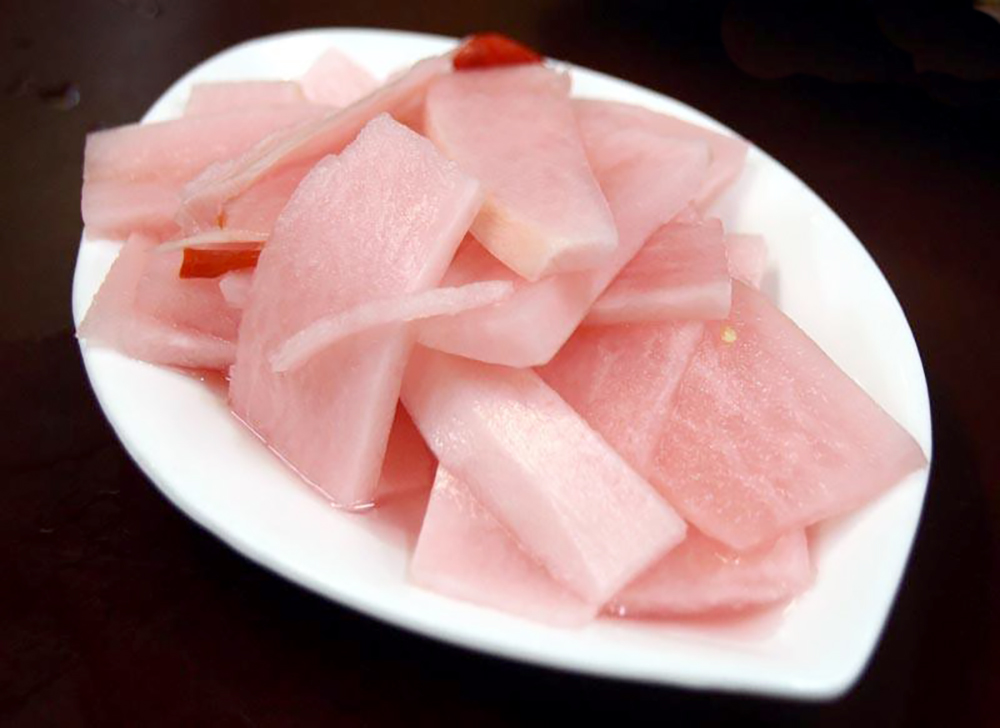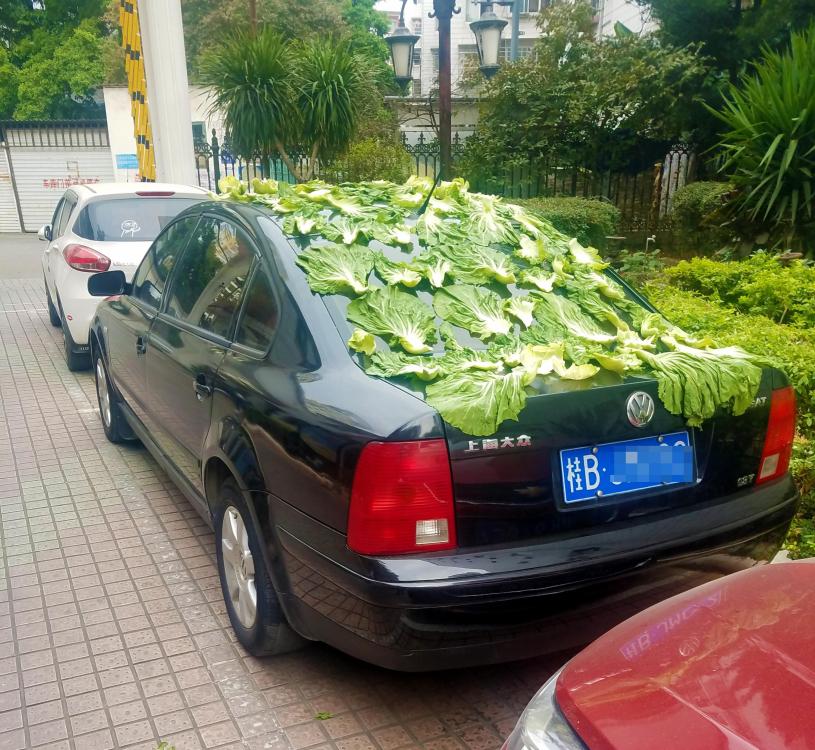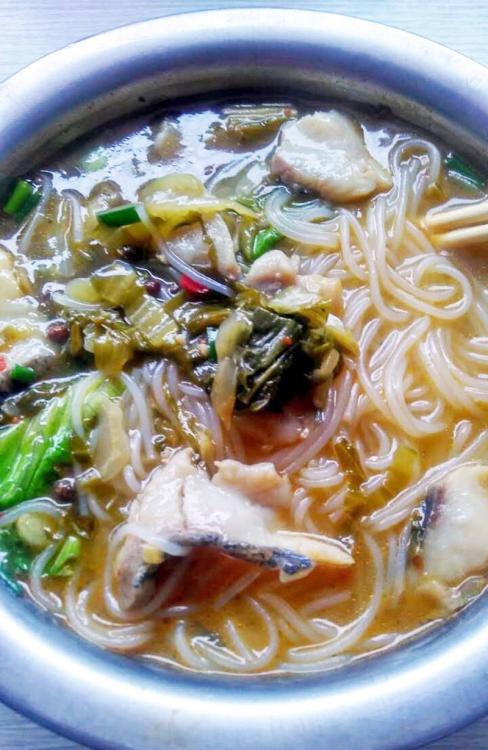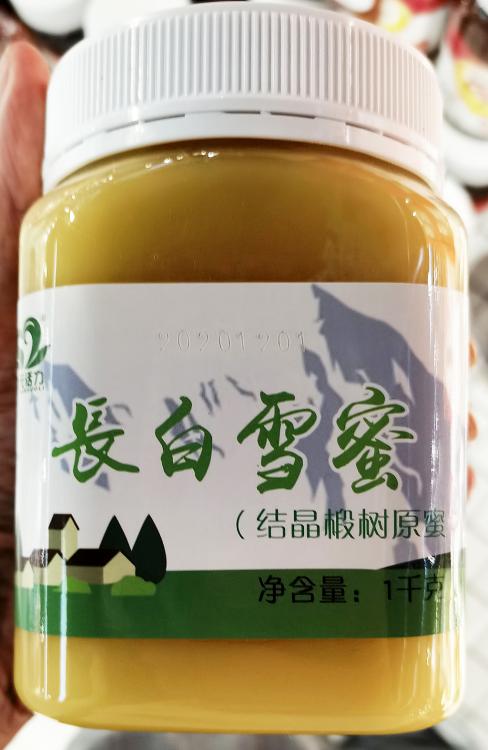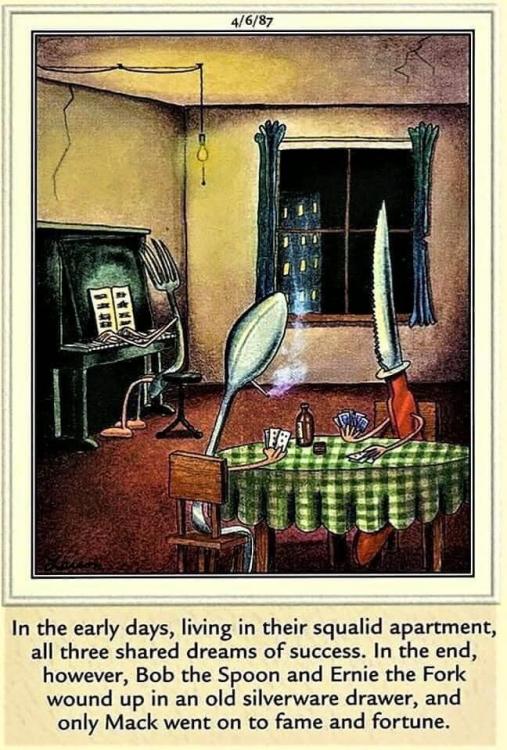-
Posts
16,656 -
Joined
-
Last visited
Content Type
Profiles
Forums
Store
Help Articles
Everything posted by liuzhou
-
15. 豆腐乳 (dòu fǔ rǔ) - Fermented Bean Curd (Tofu) It is not just green vegetables that are pickled or fermented, of course. One popular condiment is 豆腐乳 (dòu fǔ rǔ), often shortened to 腐乳 (fǔ rǔ), or pickled tofu (Note: ‘tofu’ is from the Japanese name, ‘とうふ - tōfu ’, which they took from the Chinese, which is ‘doufu’.) Cubes of tofu are first dried, then brined and fermented, along with various flavourings such as rice wine, vinegar and chilli. This is usually sold in glass jars. To be used as a condiment with such as rice, congee, etc., but can also be added to stir-fried dishes. Spicy Fu Ru Different brands of commercially produced furu vary in taste, but also in degrees of spiceness and texture. My preference is for this type, in which the tofu remains relatively firm. Others can be softer. Guilin, one of China's top tourist destinations (in better times), an hour north of here is renowned for its furu. About the only thing they sell in the small airport shopping area is presentation boxes of furu, sold for outrageous prices, of course. Find a small neighbourhood store and buy it there for a fraction of the airport price. Note: The red colour in the image above is from chili oil. However there is a type of furu known as 红腐乳 (hóng fǔ rǔ), which is red from the addition of a red yeast, Monascus purpureus. Be suspicious of furu which is dayglo red - this has probably been dyed with red food colouring.
-
Yes. you are probably correct. but I still think, any time we talk about garlic in oil, it's important to point out the risks to others who may not be aware of the possibility of serious health issues or how to avoid them.
-
Coincidentally, I was thinking about figs today after seeing these which an itinerant vendor was carrying. That got me thinking about these, which I've seen many, many times over the last few years. Dried figs. I have no idea how they are used; must find out. I suspect they are involved in TCM (Chinese Traditional Medicine) but don't actually know, but then everything else is. Interestingly (perhaps), the Chinese name for figs, 无花果 (wú huā guǒ) translates literally as 'no flower fruit'.
-
Thanks Norm. Good job. There is a discussion on these pickling jars going on now at this topic.
-
14. 芽菜 (yá cài) – Sichuan Pickled Mustard Tops In No 7 of my numbered posts above, I covered Zhacai, the Sichuanese root of a type of mustard plant. You didn’t think we were going to be ignoring the stems and leafy tops, did you? These are also salt cured, but in a more pungent manner. First they are dried, then salted and left to ferment with spices for months. Yibin city (宜宾市 - yí bīn shì) in south-eastern Sichuan is considered to produce the best. Mustard tops drying in the sun As ever, Fuchsia Dunlop's The Food of Sichuan (eG-friendly Amazon.com link) has a number of recipes for using the pickle. Sichuan Yacai A very similar pickle, made in almost the exact way from the same ingredients, is known as 雪菜 (xuě cài - literally 'snow vegetable'). They may look somewhat different, but taste the same. Warning: Outside Sichuan, in other parts of China and among much of the diaspora, 芽菜 (yá cài) is taken to mean ‘bean sprouts’; something Ms. Dunlop doesn't mention. It is safer to specify 四川芽菜 (sì chuān yá cài) for the pickle. If you have to specify bean sprouts, ask for 豆芽菜 (dòu yá cài) or just 豆芽 (dòu yá).
-
13. 酸辣海带丝 (suān là hǎi dài sī) - Spicy Pickled Kelp Strips Another quick ‘food to help the rice go down’ (下饭菜 -xià fàn cài). This time seaweed. This is a commercial, factory processed product, made in Sichuan. Where they get the kelp from, I don't know - Sichuan is a landlocked province. Ingredients are, unusually, provided in a sort of English. Note: Rap oil (sic) should be Rapeseed Oil; Chinese prickly ash is Sichuan peppercorns and the white wine is actually 白酒 (bái jiǔ), a strong spirit usually distilled from sorghum or maize. Should you prefer to pickle your own without the added chemicals, just pop into the local market where the kelp is easily available in several forms. This one is simply pickled in vinegar. Or if you prefer, you can buy it dried, either in sheets or cut into strips and tied in knots Finally, here is a homemade version made from home-cured fresh seaweed. a
-
Garlic in oil MUST be kept refrigerated or there is a real risk of botulism.
-
Only if Dunkin' Donuts sell unsweetened versions.
-
That took a while. Most rice cookers in China have a congee setting and have done for decades.
-
While I agree 100% with your second sentence, I rather like fig newtons, too.
-
Yes, there are various ways to do it. Certainly nothing difficult about it.
-
12. 酸藕 (suān ǒu); Pickled Lotus Root Lotus root (莲藕 - lián ǒu) was clearly invented by the Chinese. I mean who else would come up with a vegetable specifically designed to be eaten by incompetent chopstick users? It is a very popular vegetable, often used in soups and hot pots, but also Chinese salads and here as an example of what is known in Chinese as 下饭菜 (xià fàn cài), which doesn’t directly translate well, but means ‘food to help the rice go down’. It is a quick brined (usually two or three days) pickle and is used for many vegetables. All over town are small stalls or just handcarts with people selling this type of pickle - vegetables and fruit. People take it to snack-type restaurants and add it to whatever they buy there – usually rice noodles or congee. Or they just eat it as it comes. I bought these below this morning from a man on a stall in the basement of a local shopping mall which has many small snack places. People were buying various things to eat with their noodles etc at the other stalls. The stick is supplied to spear the crisp vegetable should you just want to eat it on the hoof, as many people do. Often, it is covered with a chili sauce and the man did offer, but I wanted you to see it clearly, so I went for the no-chili version.
-
I don't think there is any serious argument about that, but Asia is the world's largest continent and has 48 countries (as recognised by the UN).
-
11. 酸豆角 (suān dòu jué, literally pickled bean horn); Pickled Yard-Long-Beans (Vigna unguiculata subsp. sesquipedalis) 豆角 (dòu jué) is a generic term covering all sorts of green beans, but it is the name used in the market where I bought these. Actually, they are 长豇豆 (cháng jiāng dòu); meaning “long cow peas”, a type of “yard-long-bean”. In fact, they are not a yard long, instead being around half that, at 18 inches/46cm which is the meaning of the Latin sesquipedalis or “one-and-a-half-foot-long”. These are a very popular pickle, often home made, but also available in markets and supermarkets. They are cured in brine with spices, often chili and sold in bunches like this. They are chopped up and served over rice, porridge etc or added to stir fries. They are also just served as a side dish with other dishes. They are also sold factory made in supermarkets and mom and pop stores as a snack. The pickled bean pods are again chopped, then mixed with chili, ginger, garlic, chili oil, etc. As well, as being a snack, people often mix them with noodle or rice dishes. Fuchsia Dunlop's The Food of Sichuan (eG-friendly Amazon.com link) gives a recipe for curing the beans and then cooking them with minced/ground pork. The same unpickled beans are also preserved by drying, in which case they are rehydrated and sliced then added to soups, hotpots and stir fries.
-
-
Nope. never heard of it, but what I know about Mexican food is almost zero. Too much c@rn, for a start! Japanese? Maybe, but I'm doubtful.
-
I wasn't planning to get to this yet, but since it has come up (my fault entirely) in this topic, I'll deal with it now. 10. 黑蒜 (hēi suàn) - Black Garlic I guess I first have to address whether or not 'black garlic' is Chinese in origin. The answer is "I don't know." But, neither does anyone else. There are dozens of websites offering to tell you the history of this product; few do. Others make ridiculous claims and yet others just repeat what the ridiculous ones said. Wikipedia, not usually shy of inaccuracies and downright nonsense, just ignores the history completely, only showing this. The two most absurd claims concern Korea (not that these rule out Korea as the source, just not in these accounts). In 2004, a Korean entrepreneur patented a machine to produce black garlic on an industrial scale. By the time he moved to the USA in 2008, he seems to have become over-excited and started claiming that he invented the stuff! His company is now America’s top supplier. Great marketing, useless history. I know this for a fact! I first ate black garlic in Changsha, China 7 years before he invented it! Then we have the British garlic farmer who claimed even later to have discovered a 4,000-year-old Korean recipe for black garlic and tried it out. Somehow, he imagined that this meant he had invented it. Sorry mate, but if you discover a recipe and make it, you have invented precisely nothing! Interestingly, he seems to have since lost that ancient recipe and so has never actually produced it in evidence. Very convenient. More marketing BS. Another site mentions that it went from Korea to Taiwan, before being introduced to the rest of the world, including mainland China in 2010. Yeah! Right! And tea was introduced to Britain by Alaskan monks in 1953, after being invented by an Australian sheep farmer in 1412 . There is credible evidence that the 4th century BC Chinese classic Tao Te Ching (道德经 - dào dé jīng), the ‘bible’ of Daoism, mentions black garlic, although that tome is notoriously difficult to translate. Even Chinese scholars find it very difficult to interpret accurately. There are also plausible mentions in ancient Korean and Japanese documents. What I do know is that black garlic is definitely sold in China, so I think it can be mentioned here. You have to search it out – it certainly isn’t mainstream, but not difficult to find. The current supply I have is from Shandong Province on China’s east coast, also home to Confucius and Mao Zedong’s wife, Jiang Qing (who committed suicide in prison after Mao’s death) – maybe one of them invented it! The other main thing to say about black garlic is that, again despite claims on websites which should know better, it isn’t fermented in any accepted definition of fermentation. It is cooked. It is preserved, however. Whole bulbs of regular garlic are held at a temperature of 60℃ to 90℃ in a humidity of 80% to 90% for weeks or even months. You can do this at home using a slow cooker or rice cooker. However, only if you have very tolerant house companions and neighbours. It smells extremely garlicky, especially in the first couple of weeks. Most online recipes suggest processing it in a garage or outhouse, should you have one. Recipe here. Probably better to buy commercially processed garlic - once done, there is virtually no smell. The garlic undergoes a Maillard reaction and eventually turns soft and sticky. It loses all the sharp, slightly bitter taste of raw, unprocessed garlic and instead becomes sweet and reminds many people, including me, of balsamic vinegar, but without the acidity. I get two types. The first, from regular heads, is in the first picture above, but my preference is for this single-headed garlic from SIchuan, 黑独蒜 (hēi dú suàn). It can be eaten as is or added to salads, stir fries, etc. I like to crush it into mashed potatoes or just serve with rice. Black garlic mayo. Black garlic vinaigrette. The list goes on. Black garlic cookie, anyone?
-
Good question, to which I don't have the answer. The entire history of black garlic is mired in dissent, lies and male bovine excrement. I'll go into more detail in the other topic. P.S. Black garlic isn't fermented.
-
My favourite garlic snack is black garlic. You can make that if you have several weeks and don't mind your house stinking of garlic for the duration. It can be made in a rice cooker. I'll say more about it in the pickles thread soon.
-
9. 白萝卜 (bái luó bo) -Preserved Daikon Radish One of the most popular vegetables to be preserved in China has to be what is known here as 白萝卜 (bái luó bo). This is what you may know as daikon or mooli. Daikon is the Japanese name (ダイコン) ; mooli is Hiindu ( - कम -mūlī). Whatever, it is Raphanus sativus var. longipinnatus - a type of giant radish. These are used fresh in many ways - often in soups or hotpots, but also in stir fried dishes. But they are also preserved by several methods. Drying is a favourite. The vegetable is cut into thin strips and sun dried on any piece of available flat surface. I've seen vegetables drying on remote railway station platforms, sports grounds and even car roofs. Home Dried Daikon Radish Cabbage Car It is also dried more industrially to be sold in supermarkets, etc. Dried Daikon Radish from Supermarket It is also pickled in vinegar. This one below uses red-skinned radishes which gives the colour. What is less well known perhaps, is that the leaves of the plant are also edible (and delicious). These are also used fresh in stir fries, but often pickled, often industrially and sold as 萝卜头 (luó bo tóu, literally 'radish head'). You can grow dakion radish leaves fairly easily. Here is my first effort, some years ago. My technique has somewhat improved since!
-
I mentioned 酸菜鱼 (suān cài yú) in the Chinese Pickles and Preserves topic here. This soup dish of fish and pickled mustard leaf is a Sichuan classic. Today, I came across a variant. This was 酸菜鱼分 (suān cài yú fěn) i.e the same fish and pickles served with rice noodles. Thinly sliced grass carp; sour and spicy, pickled vegetation; smooth rice noodles - perfect lunch.
-
Me too. I haven't tried this one yet. I seem to have acquired a more than adequately large collection of honeys in the last few weeks. This one is, as others have suggested, 'creamed'. Here is my translation of the the more interesting information on the rear label of the jar.
-
Chinese Tilia Honey Here is the entire relevant Wikipedia entry This batch is indeed from said mountain.



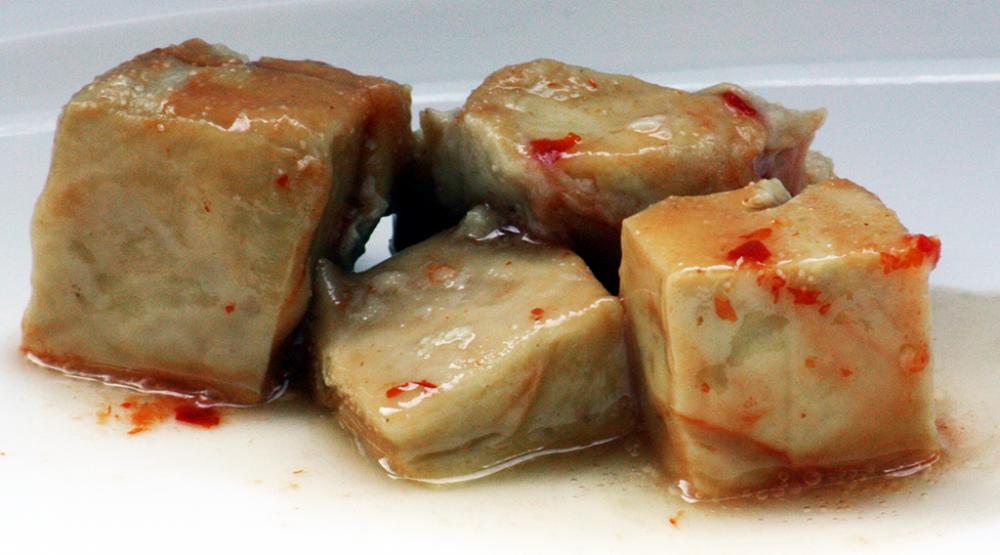
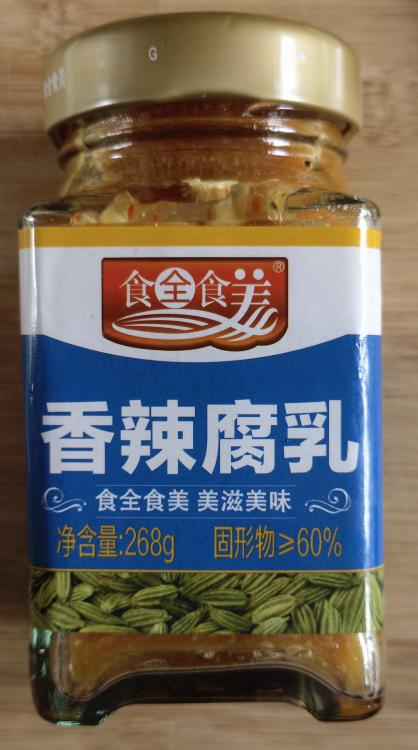
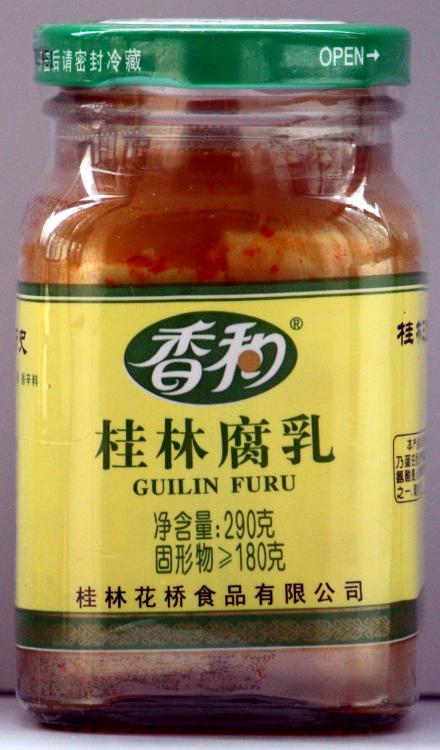
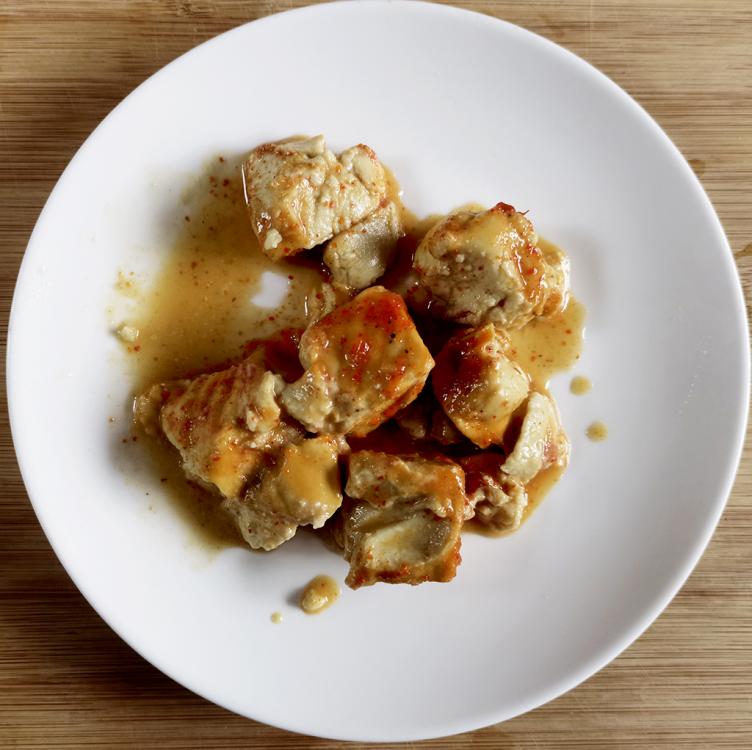


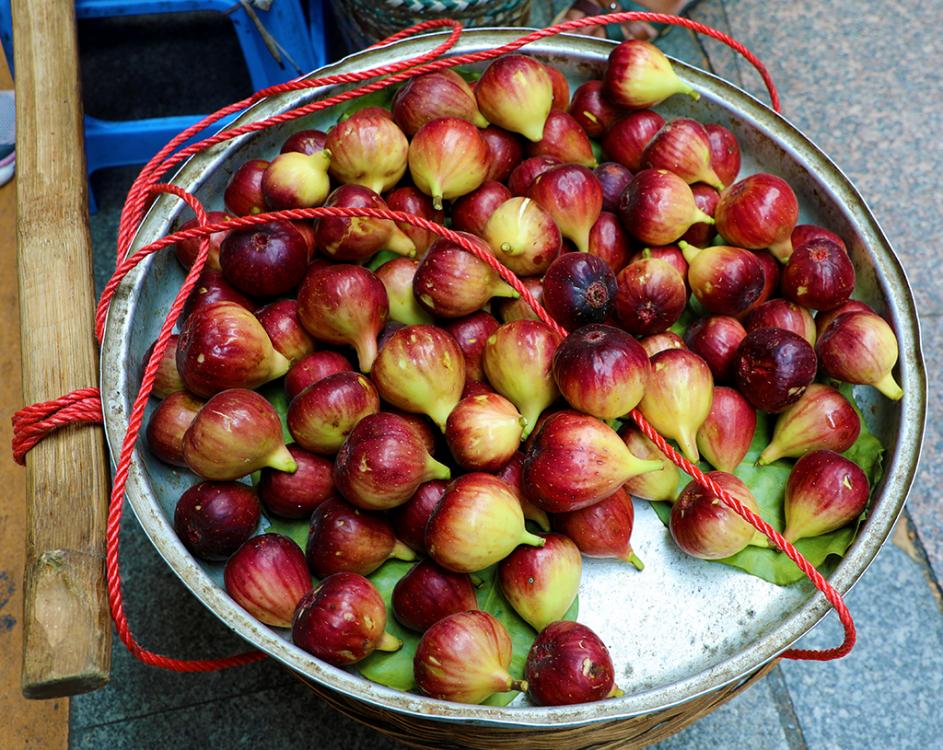
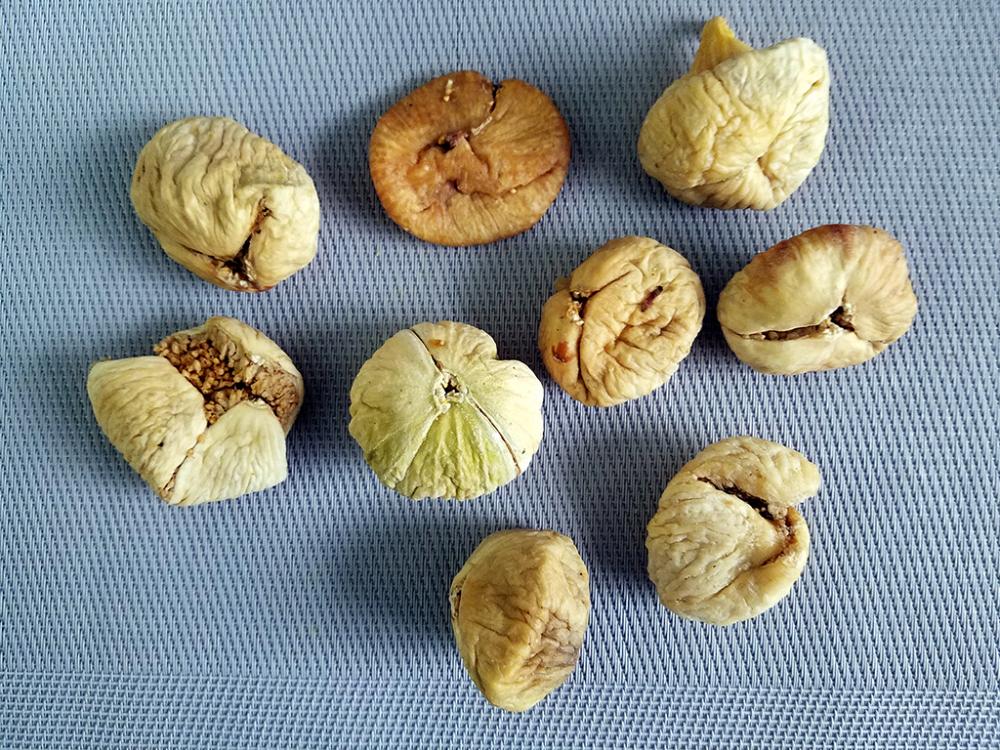
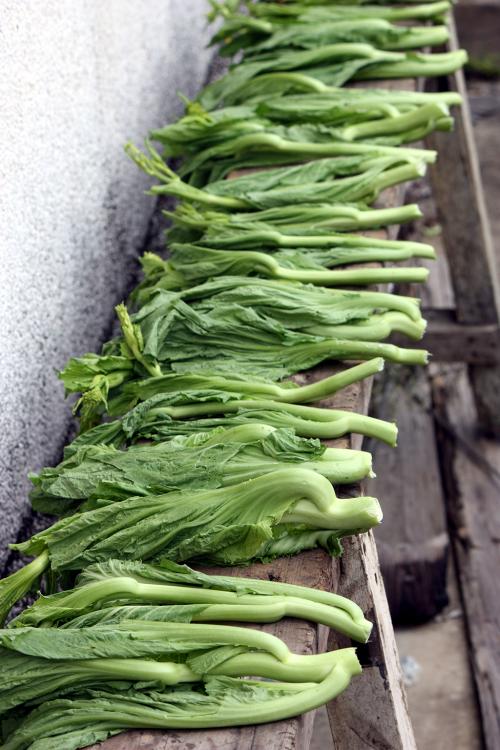
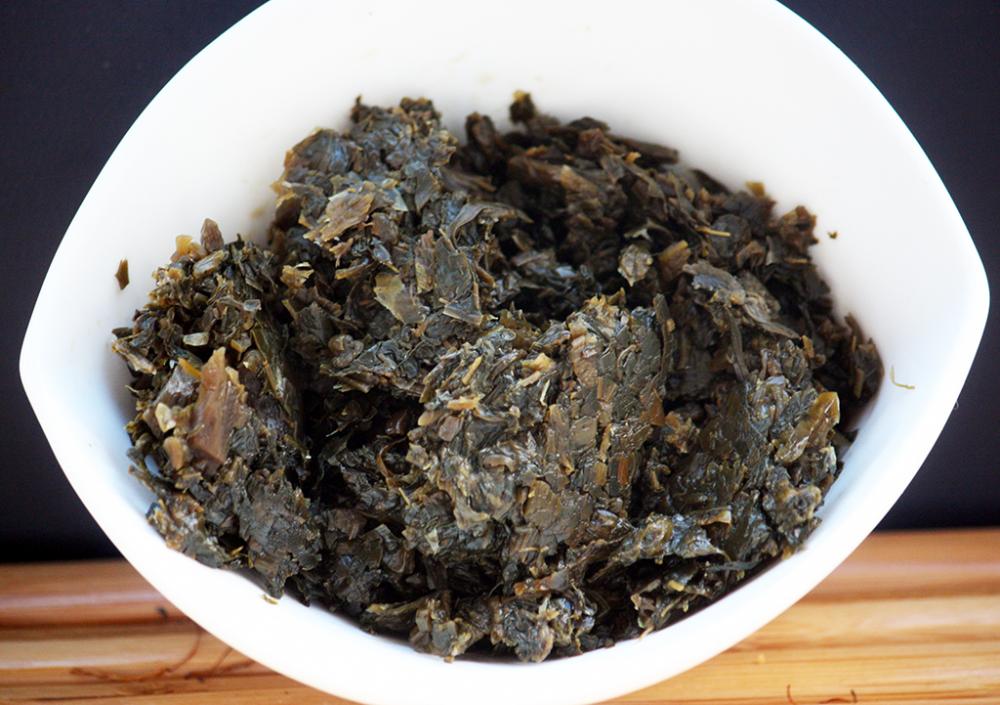
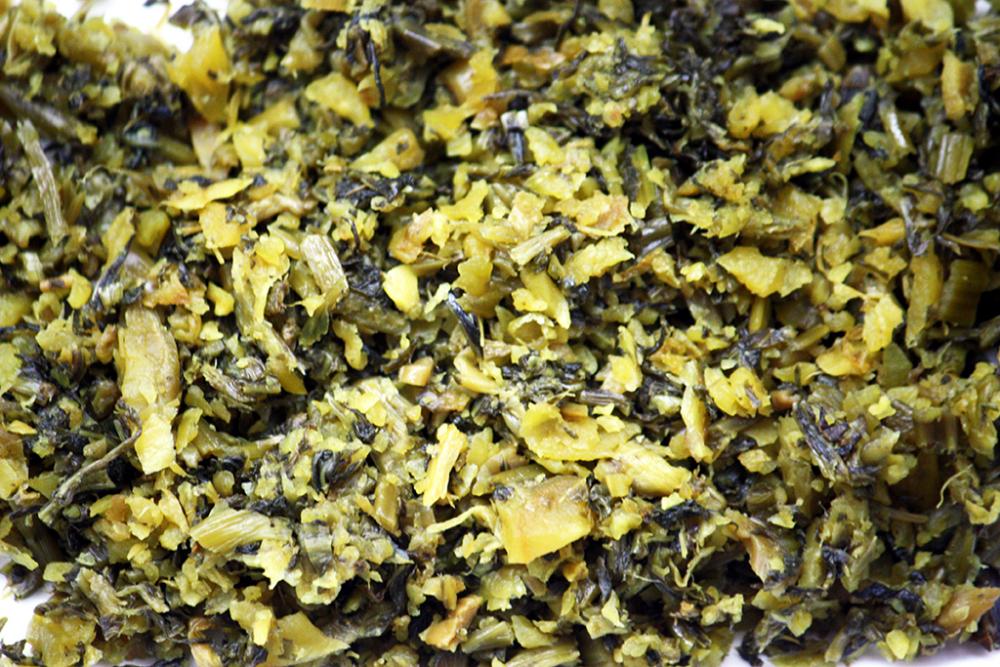
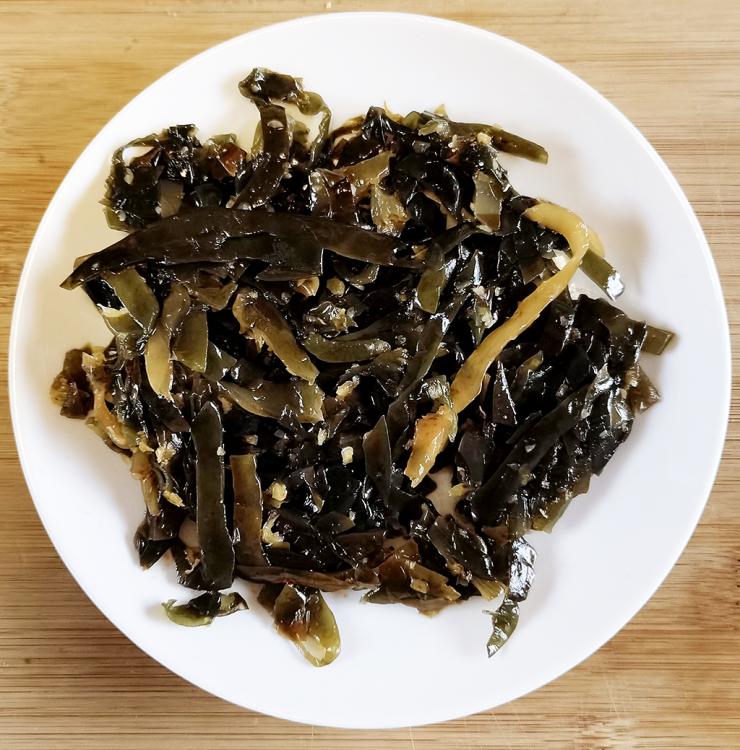
.thumb.jpg.e625a8f6869d629839a285a2975b8d66.jpg)
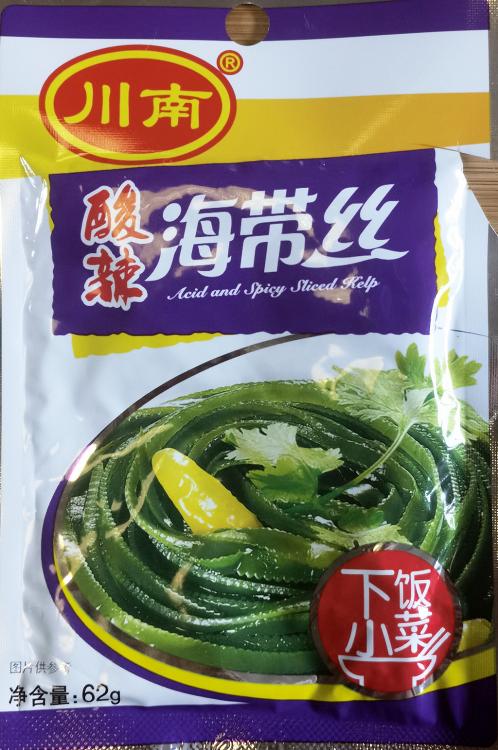

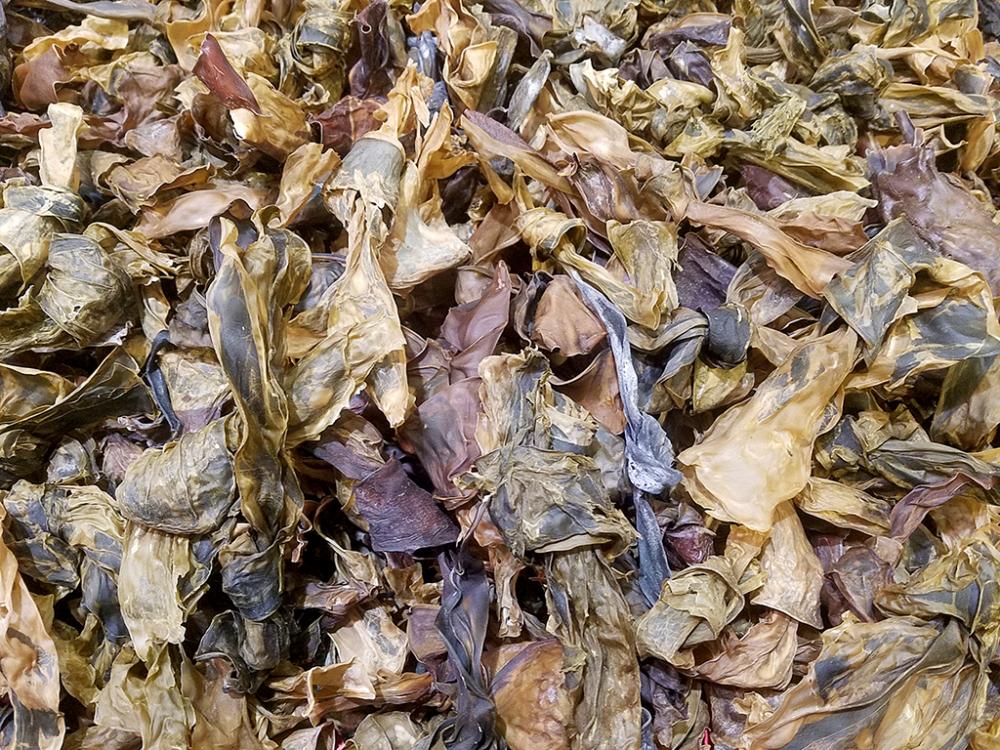

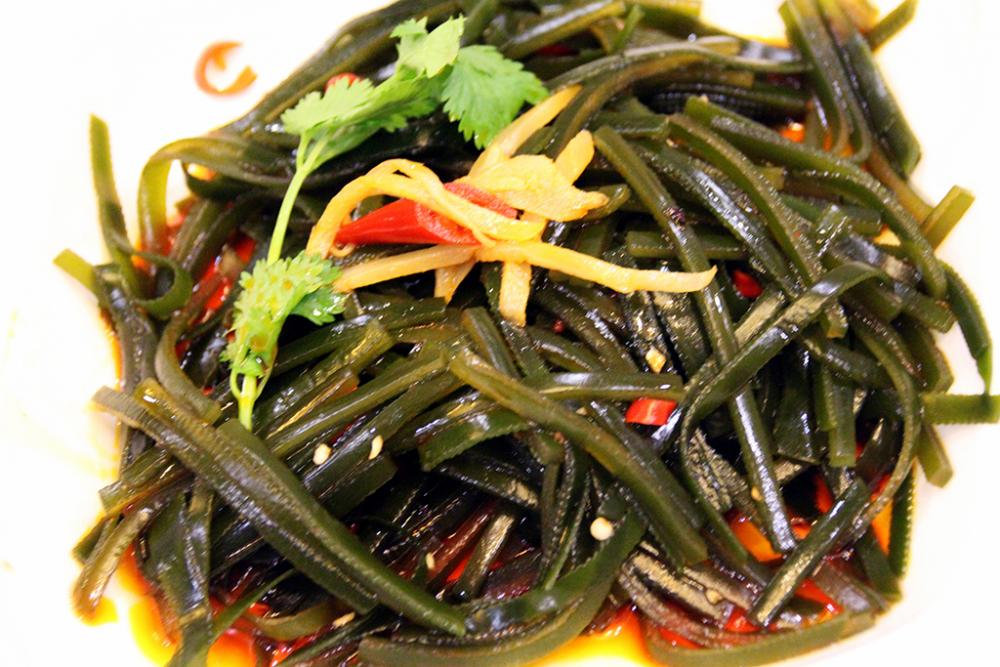

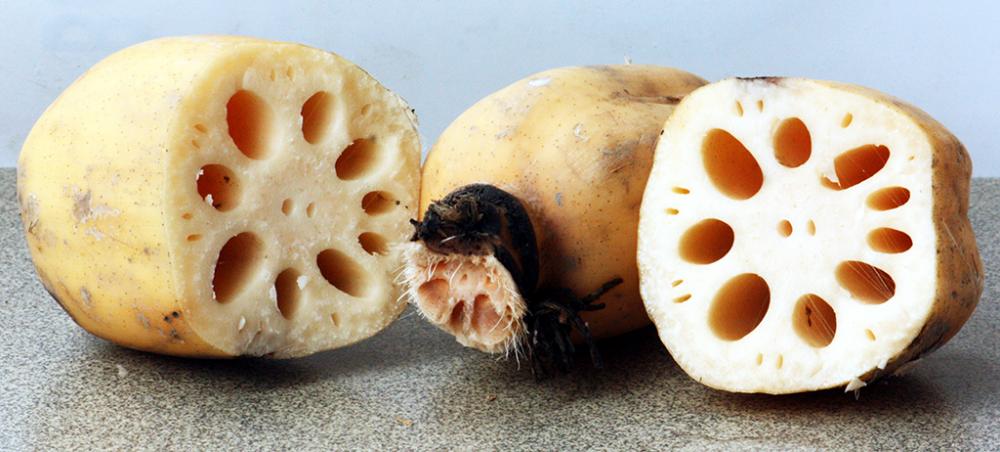
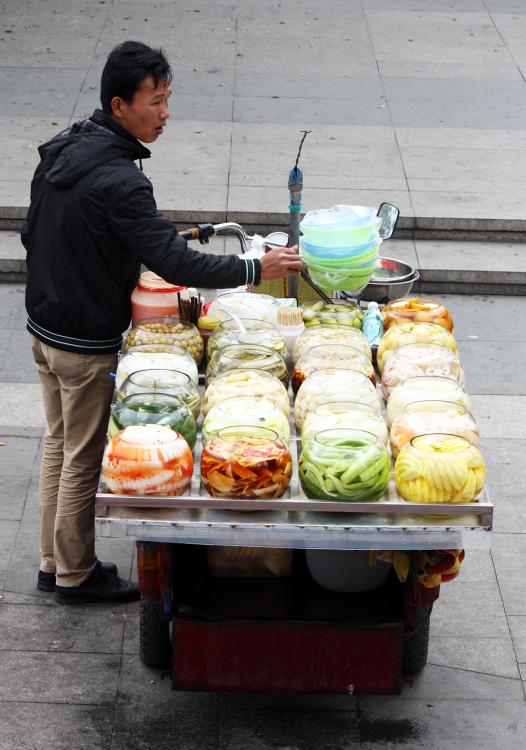
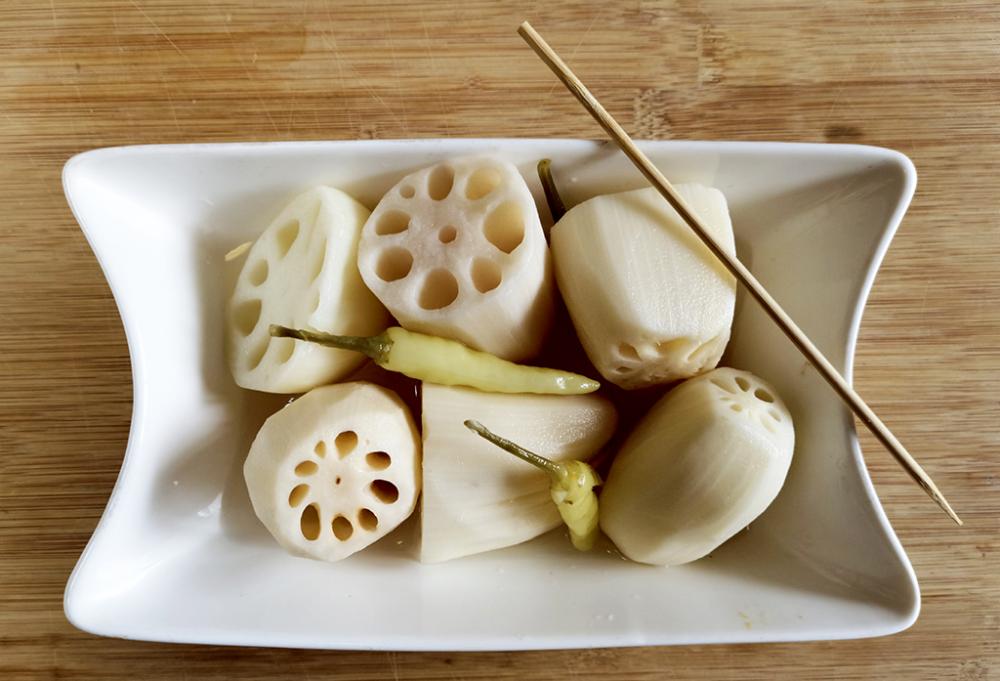
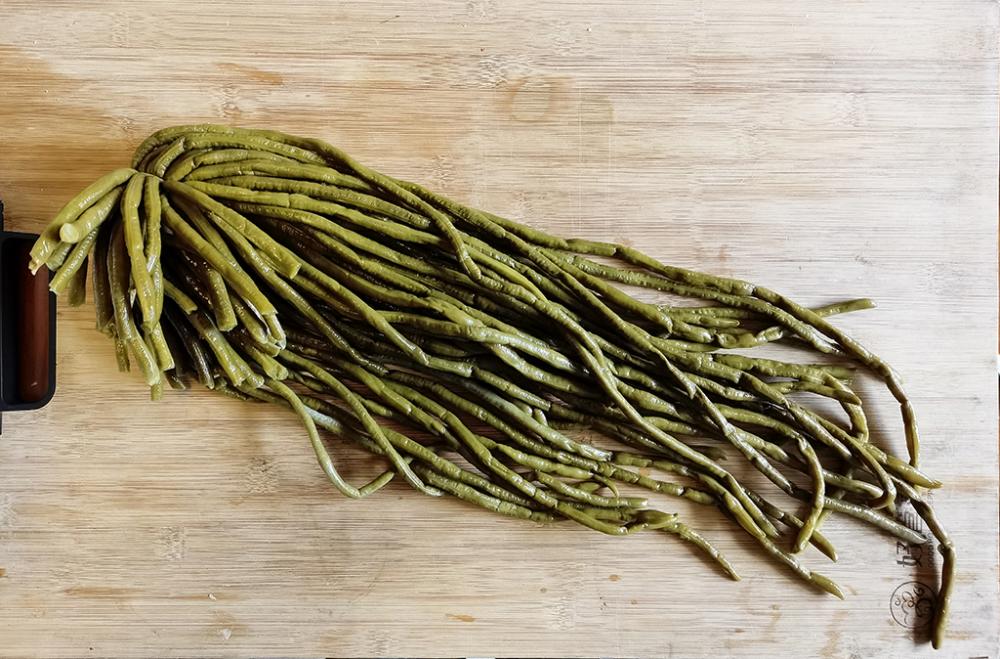
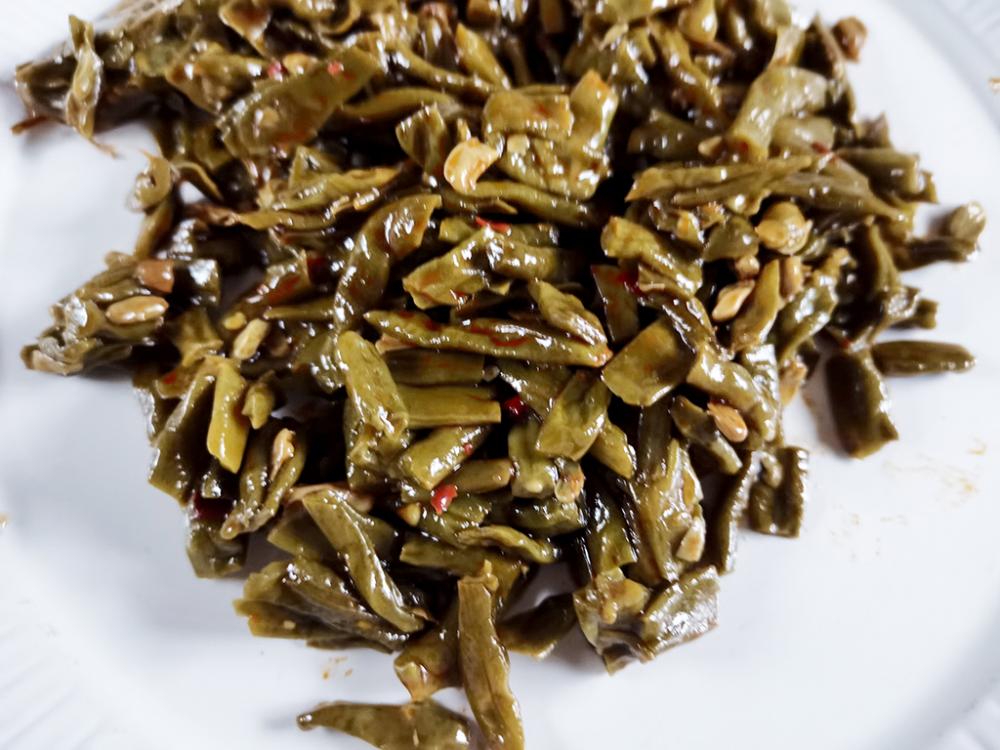
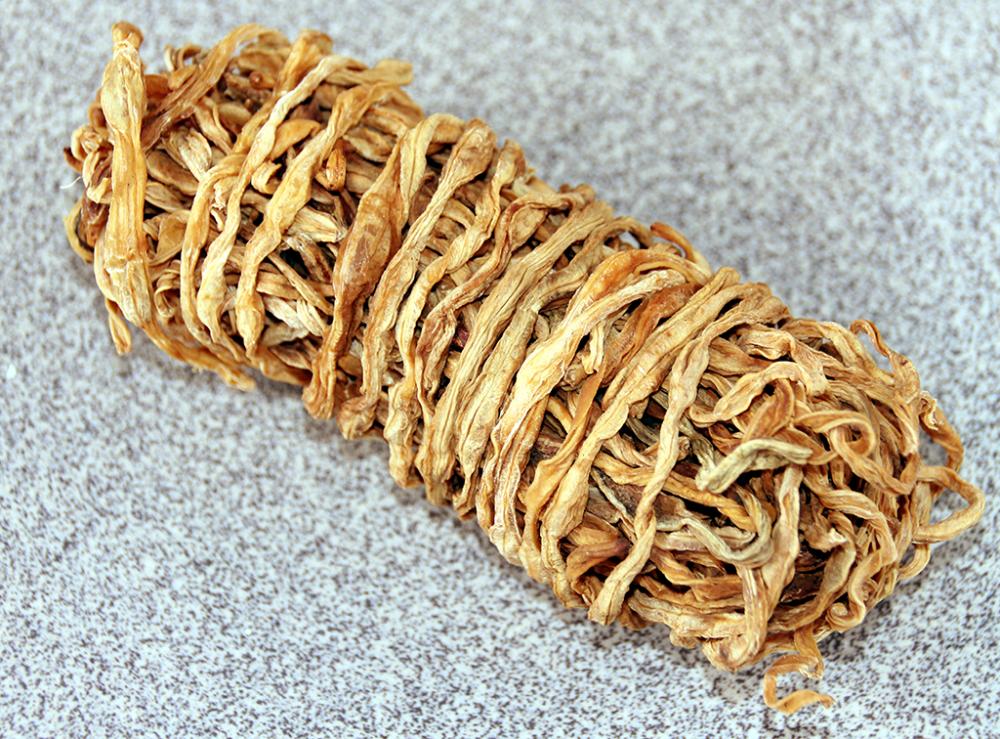



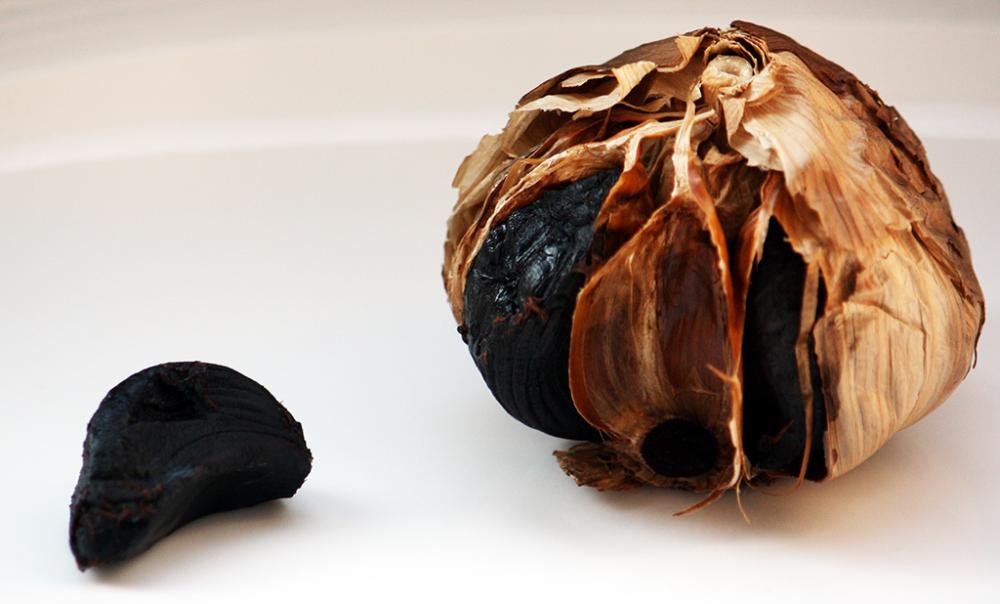
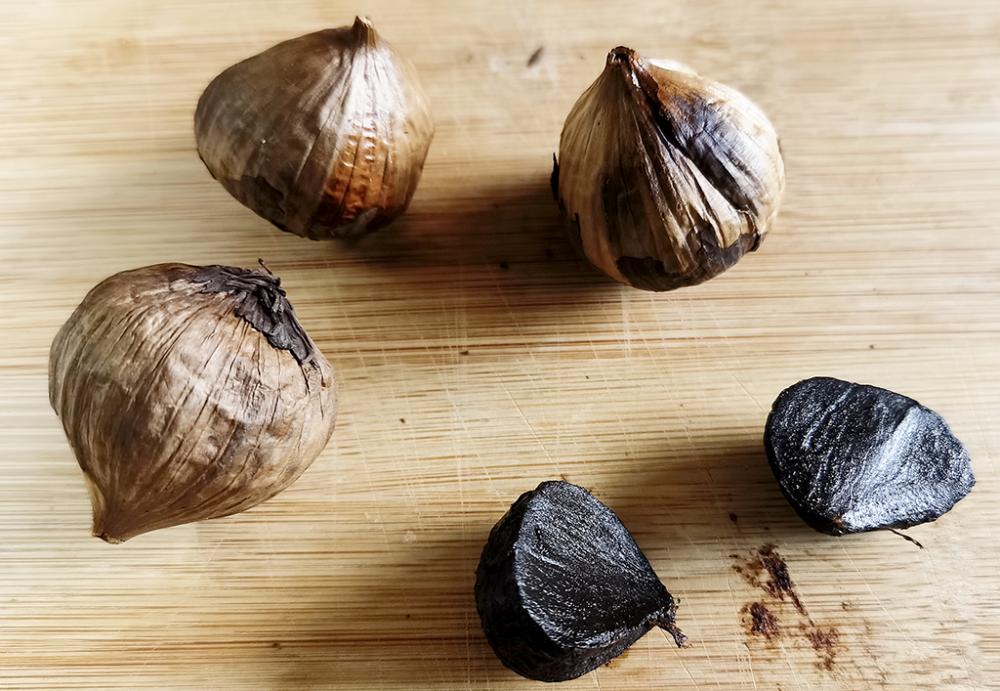
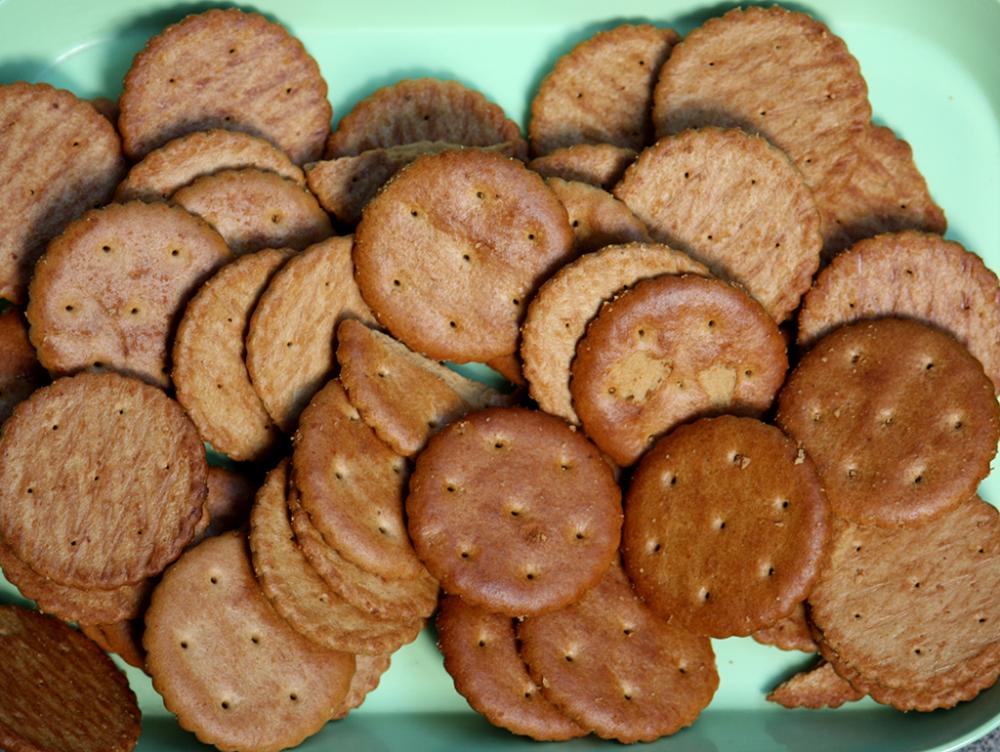

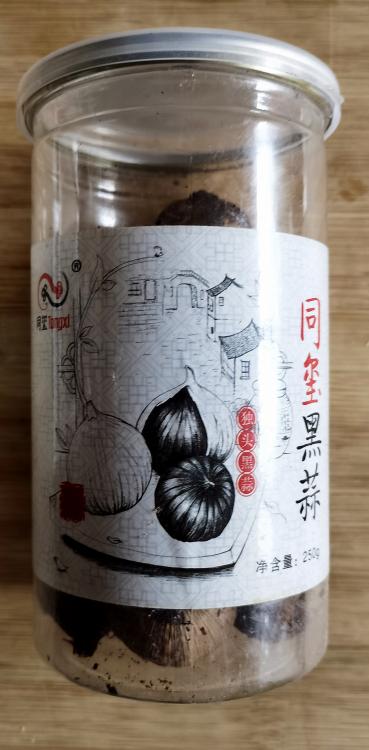
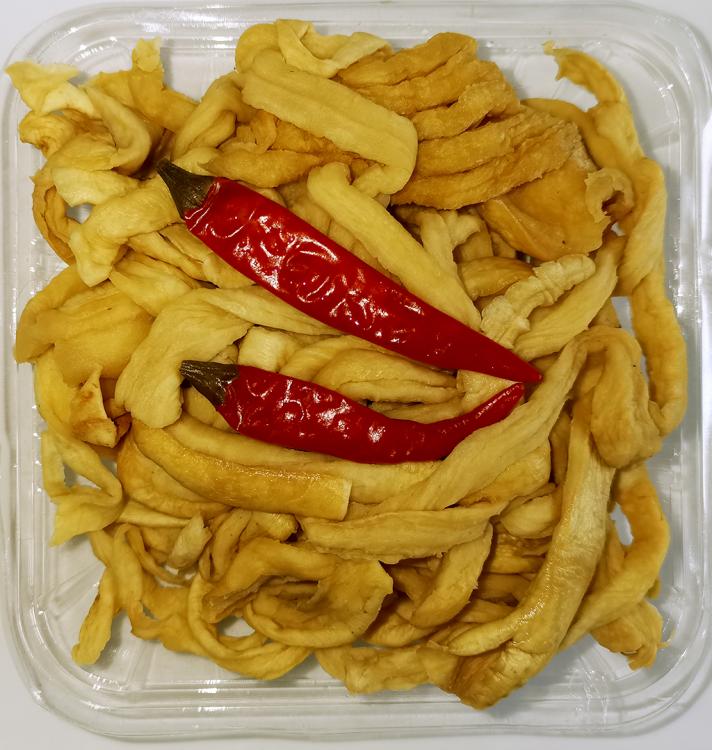
.thumb.jpg.e200a35b6bf775436cf0cfbfb3952fcb.jpg)


